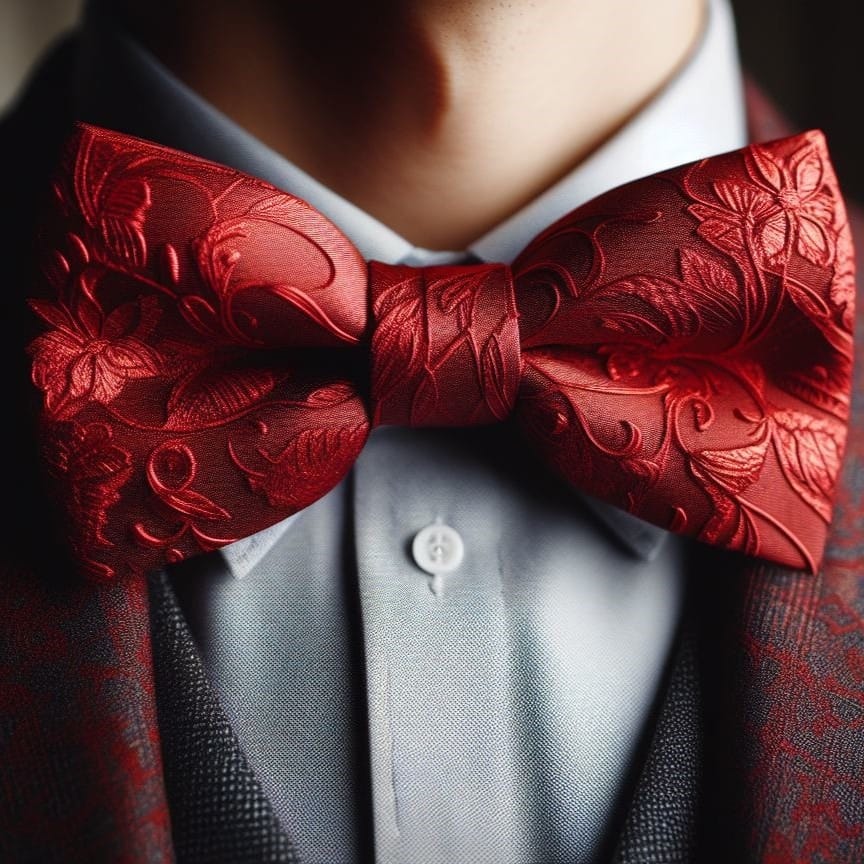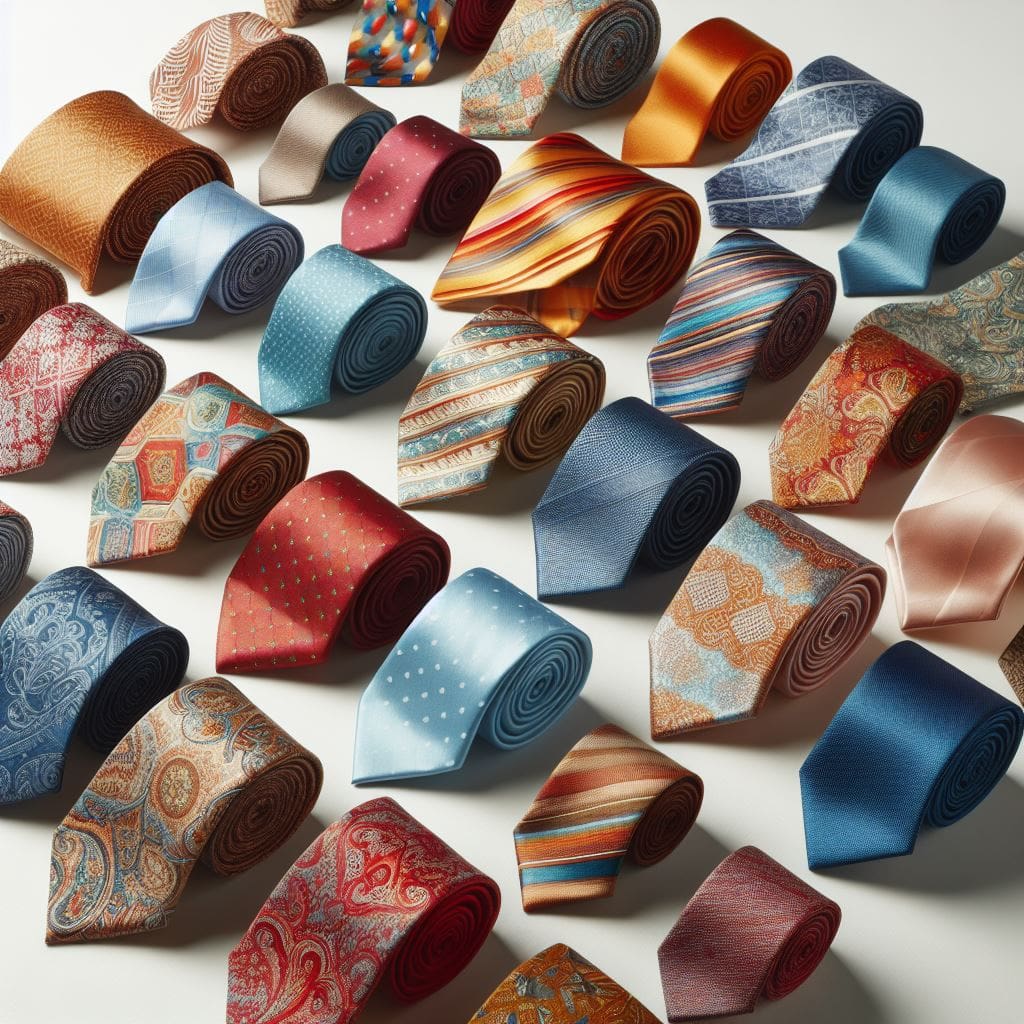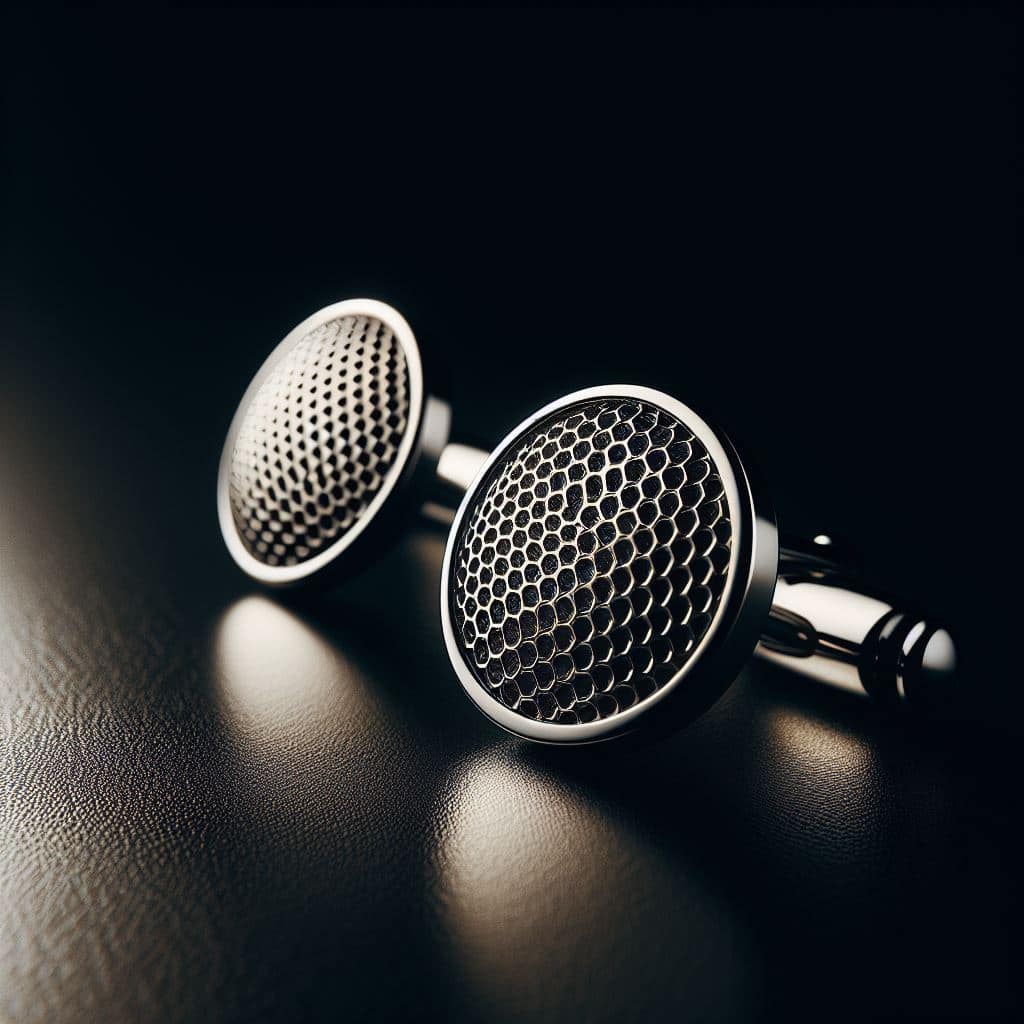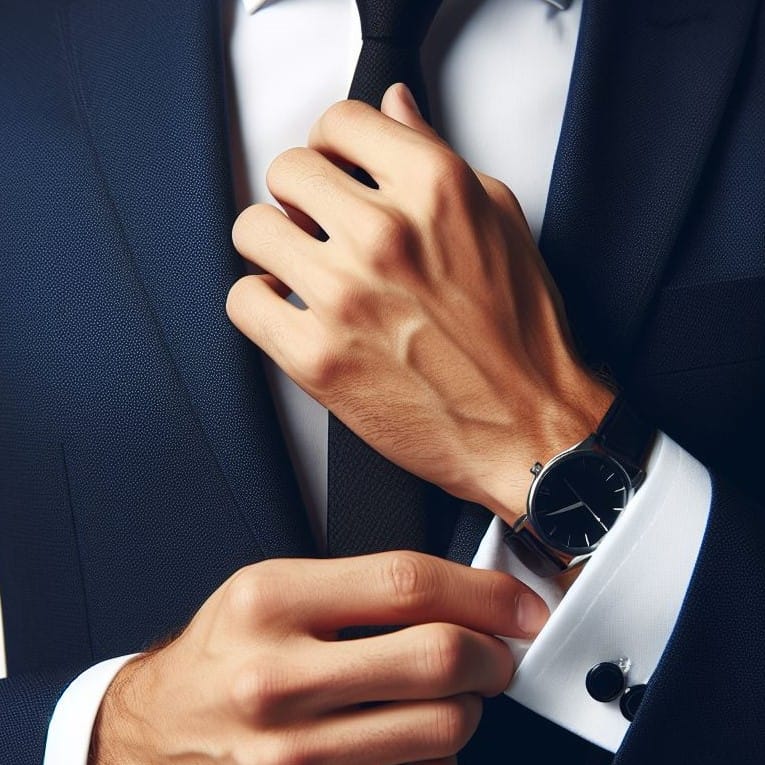In the realm of men’s fashion, the minutiae speaks volumes. The world of classic menswear thrives on details, where the right accessories elevate an outfit from ordinary to extraordinary. Ties, pocket squares, cufflinks, and watches aren’t mere embellishments; they are the soulful strokes that complete the canvas of a well-dressed gentleman. Delving into their historical significance, evolution, and styling prowess, we embark on a journey to explore the essential accessories that have stood the test of time and continue to define the sophistication and elegance of men’s fashion. Join us as we uncover the tales and tips behind these timeless elements that grace the attire of the modern-day gentleman.
Table of Contents
The Tale of Ties – A Brief History
Ties, those elongated strips of fabric that exude sophistication, have a history rooted in centuries of style and cultural evolution. Their origins can be traced back to the 17th century when Croatian mercenaries serving in France caught the attention of Parisian fashion enthusiasts. These soldiers sported unique neckwear made of silk or muslin, securing their uniforms, a style that piqued the interest of the French. This Croatian style soon became a fashion trend, coining the term “cravat,” marking the inception of the modern necktie. (La Barrie, 2022)
The cravat, an early precursor to the modern tie, evolved in French high society, leading to a variety of styles, fabrics, and knotting techniques. Initially, the cravat served a functional purpose, maintaining a soldier’s uniform, but its transformation into a fashion statement was swift. This transition heralded a shift from purely utilitarian to ornamental, marking ties as symbols of refinement and social status. (ibid)

Throughout history, ties underwent continuous evolution, witnessing variations in widths, lengths, and knot styles, each reflecting the ever-changing fashion landscape. During the late 19th century, bow ties emerged as a popular alternative, offering a distinctive silhouette that graced formal attire. Bow ties experienced periods of prominence, notably during the early 20th century, adorning the necks of gentlemen and considered essential for formal events and black-tie affairs.
However, the mid-20th century saw the decline of bow ties’ popularity, gradually replaced by the conventional long ties that gained widespread acceptance. This shift marked the ebbing of the bow tie’s dominance in everyday fashion, relegated primarily to formal events and select occasions. Despite their diminished presence, bow ties continue to maintain a niche following, embraced by individuals seeking a touch of vintage charm or seeking to make a statement with their attire.

In modern menswear, ties remain indispensable, serving as quintessential accessories that elevate outfits with their versatility and elegance. Beyond their functional purpose of adorning collars, ties embody professionalism and style, lending an air of sophistication to an ensemble. Their ability to introduce color, pattern, and individuality makes them a staple in men’s fashion, enhancing the overall aesthetic of both formal and semi-formal attire.
Styling a tie involves a myriad of knotting techniques, from classic Windsor or Half-Windsor knots to the intricate Eldredge or Trinity knots, each offering its unique appeal. The choice of knot, width, length, and pattern allows for personal expression and complements an outfit’s color scheme or theme. Whether aiming for a classic, professional appearance or a bold statement, a well-chosen tie remains a cornerstone of a gentleman’s wardrobe, accentuating style with finesse and flair.
Pocket Squares: A history of the journey to Practicality to Elegance
The evolution of pocket squares can be traced back to their utilitarian origins as functional handkerchiefs. Initially, these cloths served practical purposes, functioning as sweat wipes or shields against dust and odors this dates back to ancient Egypt and Greece, if not before. However, their transformation into decorative accessories took root during the Renaissance era, heralding the metamorphosis of the humble handkerchief into the ornamental pocket square. (“The History of the Pocket Square”, 2021)

During the Renaissance, European aristocrats added an artistic touch to their attire, elevating the status of the pocket square from mere practicality to an emblem of sophistication and refinement. These pocket squares, crafted from luxurious fabrics and adorned with intricate designs, became symbols of status and taste among the elite.(The Complete Handkerchief History, 2023)
The dawning of the 19th century saw the integration of a dedicated pocket in men’s suit jackets designed explicitly for pocket squares. (ibid) This deliberate inclusion further accentuated the pocket square’s significance in men’s fashion, cementing its position as an essential sartorial detail. A gentleman’s breast pocket became the canvas upon which the pocket square unfolded its elegance, adding an understated yet impactful touch to formal wear.

Pocket squares maintain their relevance in contemporary menswear, serving as versatile accessories that infuse sophistication and individuality into suits and blazers. They offer a canvas for experimentation, allowing men to explore various folding techniques, each exuding a distinct style statement.
Styling a pocket square involves the art of coordination. Choosing between matching or contrasting colors with the tie, shirt, or suit offers flexibility in expressing personal style. From the classic presidential fold exuding a timeless elegance to the flamboyant puff or crown folds evoking a more avant-garde appeal, each fold adds depth and character to an ensemble.
The pocket square’s placement and fold can dramatically alter the overall look, transforming a conventional suit into an ensemble that speaks volumes about its wearer’s style sensibilities. A well-coordinated pocket square, skillfully folded and positioned, serves as the final flourish, enhancing the attire’s sophistication and visual appeal.
Cufflinks: Ancient History to Modern Elegance
Cufflinks, these seemingly modest yet exquisitely crafted accessories, trace their origins to ancient civilizations. The concept of fastening clothing with decorative items dates back to the ancient Egyptians. (Egyptian, n.d.) They used ornate buttons or small ornaments to secure garments, a practice that gradually evolved into what we now recognize as cufflinks.
However, it wasn’t until the 17th century that cufflinks emerged prominently among European nobility. (Rosenberg, 2022) Initially, they served a functional purpose of securing shirt cuffs, yet their transformation into symbols of wealth and status soon ensued. What began as utilitarian items evolved into tokens of sophistication and privilege.

The journey of cufflinks through historical epochs witnessed an array of intricate designs and materials. From early chain-style links to embellishments adorned with precious gemstones or intricate engravings, cufflinks transcended mere functionality to become expressions of personal style and opulence. These small details communicated volumes about the wearer’s taste, elegance, and social status.
In contemporary fashion, cufflinks retain their significance as refined accessories that add a touch of elegance and individuality to a man’s attire. They play an essential role in formal occasions, enhancing the sophistication of a well-tailored shirt and suit ensemble. The subtle glint of cufflinks draws attention to the cuff area, showcasing meticulous attention to detail.
Styling cufflinks involves a thoughtful selection process, considering both the occasion and the overall attire. Classic metallic designs, such as silver or gold, with minimal embellishments, remain timeless choices for formal wear. These understated options effortlessly complement suits and convey a sense of refined elegance.

For semi-formal or casual settings, individuals often opt for unique or novelty cufflinks that reflect personal interests or hobbies. From quirky designs to thematic motifs, these cufflinks inject personality and character into an outfit, serving as conversation starters.
Coordinating cufflinks with other accessories, such as tie clips or watches, is crucial for achieving a cohesive and polished appearance. Matching metals or complementary colors creates a harmonious ensemble, ensuring that each accessory contributes to an overall refined look.
However, while cufflinks add a touch of sophistication, sometimes, less is more. Overly elaborate or flashy cufflinks might seem ostentatious, depending on the context. A balance between refinement and restraint is key, ensuring that the accessories enhance the outfit without overshadowing it.
Cufflinks, with their rich historical heritage and continued significance in contemporary fashion, embody elegance and refinement. Their evolution from functional fasteners to statement pieces is a testament to their enduring appeal in adding a touch of sophistication to a gentleman’s attire.
Watches: A history of our Beloved Timepieces
The evolution of timekeeping devices is a saga spanning centuries, evolving from ancient sundials to the precision of modern wristwatches. However, the most significant transformation came during the 20th century, marking the shift from pocket watches to wristwatches, profoundly influenced by the tumultuous periods of World War I and World War II.
Initially, pocket watches had been the staple of timepieces, adorning the vests and waistcoats of men across the globe. Their elegance and functionality made them essential accessories for gentlemen. However, the exigencies of war propelled a change in timekeeping conventions. Soldiers on the battlefield found the convenience of wrist-worn timepieces paramount, allowing for easy time checks without the hassle of retrieving a pocket watch.
World War I, in particular, played a pivotal role in popularizing wristwatches among men. (Friedman, 2015)Practicality outweighed tradition as soldiers realized the immense benefits of having timepieces securely fastened to their wrists. The wristwatch’s convenience for synchronized maneuvers and timely coordination during combat maneuvers proved invaluable

By World War II, wristwatches had become a symbol of practicality and style for men. The design evolved to cater to various functionalities – from rugged field watches to precise aviator timepieces. As veterans returned home from the war, they brought back not only experiences but also a penchant for wristwatches, triggering a cultural shift in men’s fashion.
This shift marked the wristwatch’s ascension to the forefront of men’s accessories, supplanting the dominance of pocket watches. The wristwatch transformed from a purely functional wartime instrument into a stylish statement piece, symbolizing a blend of utility and elegance.
In the post-war era, wristwatches continued to evolve, becoming more diverse in styles and functions. From sophisticated dress watches suitable for formal occasions to durable sport watches built for rugged activities, the wristwatch repertoire expanded, catering to various preferences and lifestyles.
Styling a wristwatch in the modern era entails understanding its purpose and matching it with the occasion. Dress watches exude elegance in formal settings, while sport watches boast functionality and durability. The choice of materials, sizes, and strap options allows men to express their personality and style while ensuring a well-coordinated ensemble.
The 20th-century transformation of wristwatches from utilitarian wartime gear to fashionable accessories solidified their status as an essential element of a gentleman’s attire. The transition from pocket watches to wristwatches represents not just an evolution in timekeeping but also a cultural shift that continues to resonate in modern menswear.
Putting the history of it all together
In the realm of men’s fashion, accessories embody a profound significance that extends beyond mere embellishments. Ties, with their historical origins rooted in Croatian soldiers’ neckwear, evolved into symbols of sophistication and style. Their versatility in complementing attire with color, pattern, and elegance remains unrivaled, making them an indispensable accessory in a gentleman’s wardrobe.
Cufflinks, with their ancient origins tracing back to ancient Egyptians, transformed from utilitarian fasteners into opulent adornments. Their intricate designs and materials symbolize refinement, adding a touch of sophistication to formal attire while serving as subtle statements of personal style.
Pocket squares, born from functional handkerchiefs, blossomed during the Renaissance, adorning men’s breast pockets as emblems of elegance. Their ability to infuse suits and blazers with flair and personality through various folds and placements remains a testament to their versatility.
Watches, from sundials to modern timepieces, underwent a transformative journey, transcending utility to become iconic accessories symbolizing prestige and taste. Their evolution from pocket watches to wristwatches marked a shift in men’s fashion, embracing a blend of tradition and contemporary style.
Each of these accessories contributes its unique essence to a gentleman’s attire, reflecting individuality, sophistication, and refined taste. From the tailored elegance of ties to the subtle sophistication of cufflinks, the pocket square’s artistic touch, and the timeless allure of watches, these accessories intricately weave a narrative of sartorial elegance that transcends time and trends.
Embracing these accessories is not merely a gesture of adorning oneself but a deliberate choice to celebrate heritage, craftsmanship, and personal expression. It’s a statement that resonates beyond fashion, echoing a gentleman’s appreciation for detail, tradition, and the art of refined dressing.
In essence, the fusion of ties, cufflinks, pocket squares, and watches represents an embodiment of elegance, offering an avenue for men to express their style, sophistication, and individuality in every meticulously chosen detail.
References
- La Barrie, James. “The History of the Tie.” R. Hanauer Bow Ties, R. Hanauer Bow Ties, 22 Dec. 2022, bowties.com/blogs/the-gentlemans-guide/history-of-the-tie.
- “The History of the Pocket Square.” Adamley, 29 Sept. 2021, adamley.co.uk/the-history-of-the-pocket-square/
- “The Complete Handkerchief History.” HankyBook, 28 Nov. 2023, hankybook.com/handkerchief-history-2/.
- “Egyptian.” Encyclopædia Britannica, Encyclopædia Britannica, inc., www.britannica.com/art/jewelry/Egyptian. Accessed 2 Jan. 2024.
- Rosenberg, Abi. “The History of Cufflinks.” Deakin & Francis UK, 26 Apr. 2022, deakinandfrancis.com/the-history-of-cufflinks/.
- Friedman, Uri. “A Brief History of the Wristwatch.” The Atlantic, Atlantic Media Company, 27 May 2015, www.theatlantic.com/international/archive/2015/05/history-wristwatch-apple-watch/391424/.


One response to “Ties, Watches, Pocket Squares, and Cufflinks: An Amazing History of the 4 Main Accessories of Menswear.”
[…] Quality Accessories: Elevate your look with subtle yet impactful accessories. A leather belt, a stylish watch, or pocket squares can enhance your outfit without being too overpowering. […]